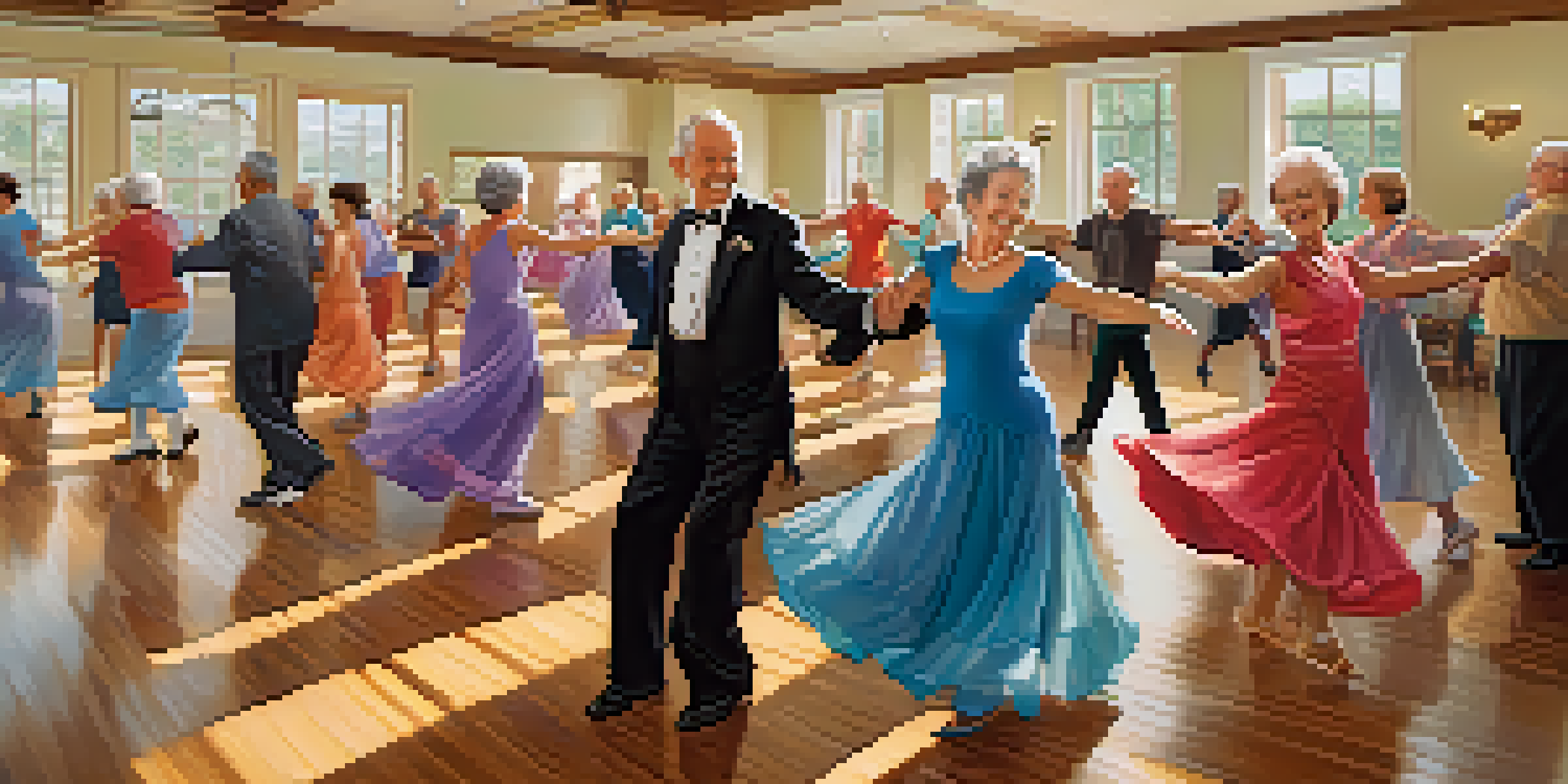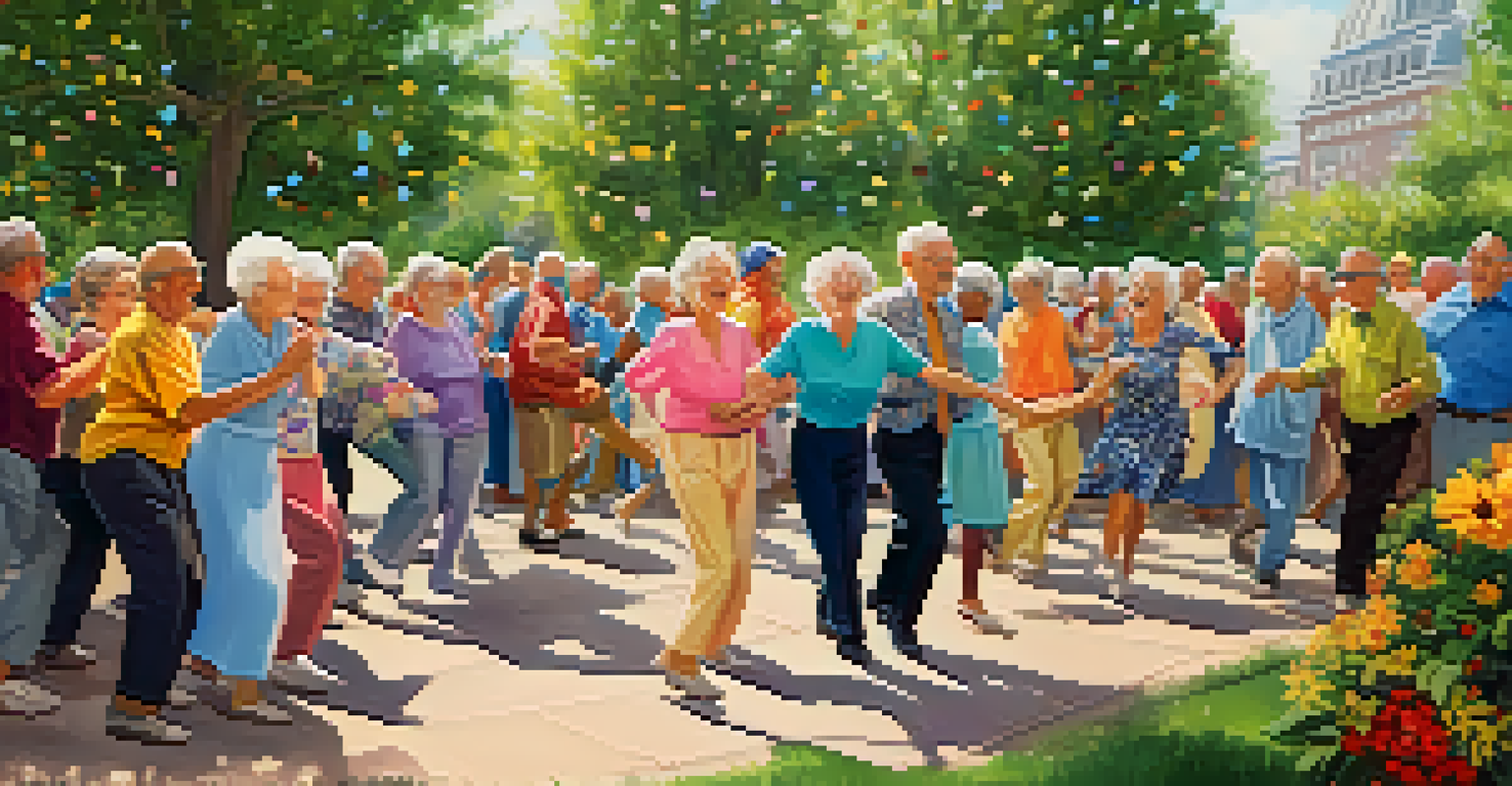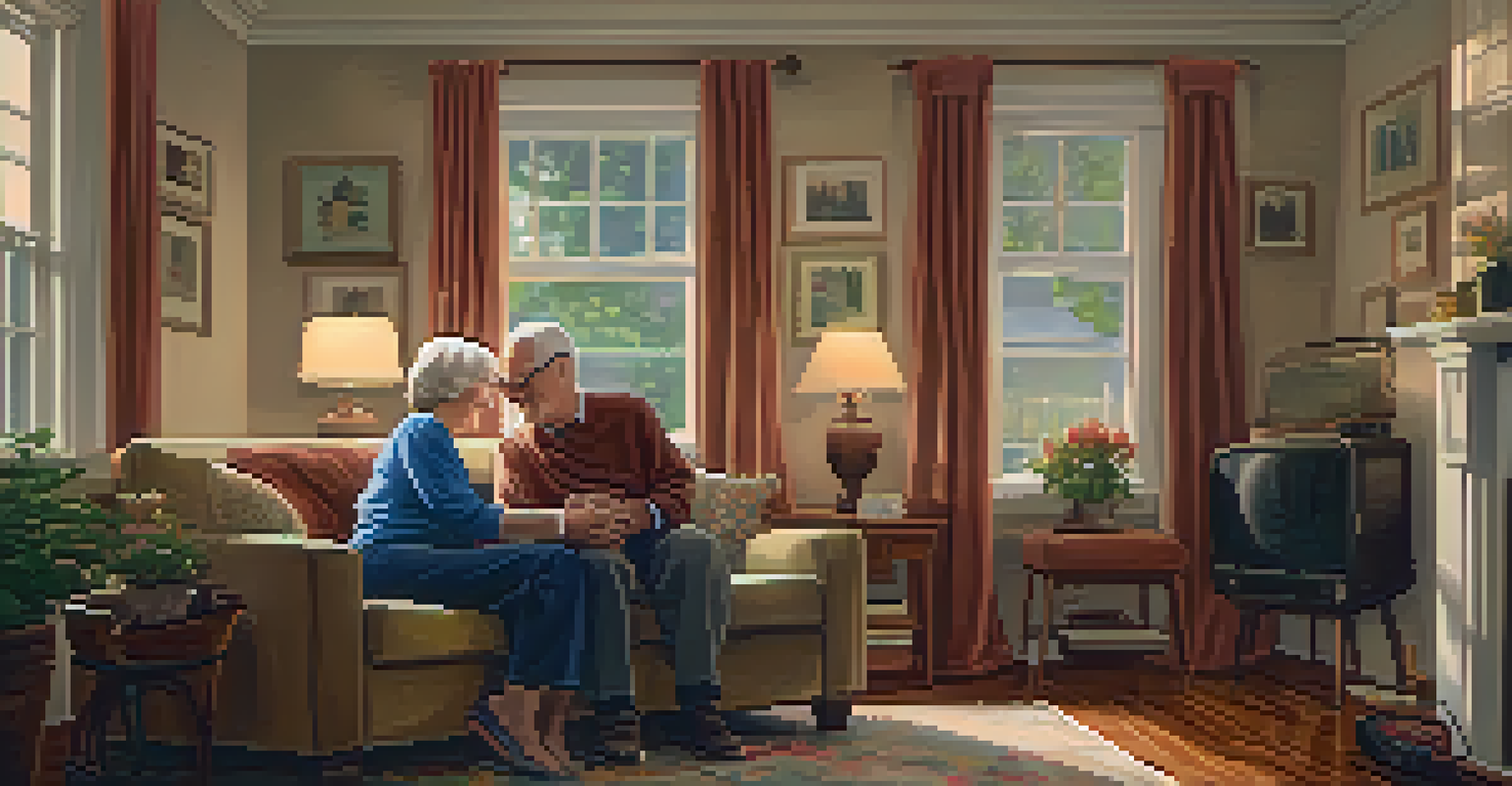Understanding the Aging Body: Dance Adaptations for Seniors

The Benefits of Dance for Seniors' Wellbeing
Dance offers a unique way for seniors to maintain physical health while enjoying themselves. It improves balance, strength, and flexibility, which are crucial as we age. Beyond physical benefits, dance also enhances mental health by boosting mood and reducing feelings of isolation.
Dance is the hidden language of the soul.
Engaging in dance can also stimulate cognitive functions through rhythm and memory, keeping the mind active. Plus, it's a social activity, allowing seniors to connect with others and build friendships. This combination of physical and social benefits makes dance a holistic approach to wellness.
Moreover, it can be tailored to suit individual needs, making it accessible to everyone, regardless of fitness level. Whether it's a gentle sway to soft music or more structured movements, there's a dance style for everyone. Emphasizing fun over fitness can lead to long-lasting benefits.
Understanding the Aging Body: Key Changes
As we age, our bodies undergo various changes that can impact movement and flexibility. Muscles may weaken, joints can become stiffer, and balance may decrease, making physical activity more challenging. Understanding these changes is the first step in adapting dance to meet seniors' needs.

For instance, older adults might experience a reduction in bone density, which makes them more susceptible to fractures. Therefore, it's important to incorporate low-impact dance styles that minimize stress on joints. Recognizing these physical limitations allows for safer and more enjoyable dance experiences.
Dance Boosts Seniors' Wellbeing
Dance enhances physical health, mental clarity, and social connections for seniors.
By acknowledging the body's changes, we can create an environment that encourages movement without fear of injury. This understanding fosters a positive attitude towards dance, making it a joyful experience rather than a daunting one. Ultimately, it's about finding joy in movement at any age.
Choosing the Right Dance Style for Seniors
When selecting a dance style for seniors, it's essential to consider their interests and physical capabilities. Styles like ballroom, line dancing, or even gentle forms of jazz are often well-suited for older adults, providing rhythm and fun without excessive strain. The key is to find a style that resonates with them personally.
Life is better when you dance.
Adaptations can also be made to various dance forms to ensure accessibility. For instance, seated dancing can be an excellent option for those with limited mobility, allowing them to enjoy the rhythm and community without standing. This adaptability ensures that everyone can participate.
Ultimately, the right dance style can foster confidence and joy. Encouraging seniors to explore different styles not only keeps things interesting but also helps them discover new passions. This exploration is what makes dance a lifelong journey, rather than just a temporary activity.
Safety Tips for Seniors Dancing
Safety should always be a priority when seniors are dancing. It's important to ensure that the environment is free of hazards, such as loose rugs or slippery floors, which could lead to falls. A clear, open space can help promote safe movement and confidence.
Wearing appropriate footwear is another crucial aspect of safety. Shoes with a non-slip sole provide better support and stability, reducing the risk of accidents. Additionally, encouraging seniors to listen to their bodies and take breaks when needed can prevent overexertion.
Safety is Key for Dancing Seniors
Creating a safe environment and using appropriate footwear are crucial for seniors to enjoy dance.
Lastly, incorporating warm-up and cool-down sessions can help prepare the body for movement and promote recovery afterward. These simple steps can make a significant difference in ensuring that dance remains a safe and enjoyable activity for seniors, encouraging them to keep moving.
Adapting Dance Movements for Comfort
Adapting dance movements is essential for ensuring comfort and enjoyment for seniors. Modifications can be as simple as reducing the range of motion or breaking down complex steps into manageable parts. This approach helps build confidence and skill at a comfortable pace.
Incorporating props, like chairs or scarves, can also enhance the experience. Chairs offer support for those who may need it, while scarves can add a fun visual element to movements. These adaptations create an engaging atmosphere that encourages creativity and self-expression.
Ultimately, the goal is to make dance an enjoyable experience without frustration. By focusing on comfort and personal expression, seniors can rediscover the joy of movement. This adaptability allows for a more inclusive and supportive dance community.
Finding Community Through Dance Classes
Joining a dance class can be a fantastic way for seniors to find community and support. Many local community centers and senior centers offer classes tailored specifically for older adults, providing a safe space to learn and connect. These classes can foster friendships and create a sense of belonging.
Participating in group dance sessions not only promotes physical activity but also enhances social engagement. Sharing laughter and experiences on the dance floor can significantly uplift spirits and combat feelings of loneliness. This connection can be incredibly meaningful in the later stages of life.
Finding Community Through Dance
Joining dance classes helps seniors build friendships and a sense of belonging.
Moreover, many dance classes encourage collaboration and creativity, which can lead to a stronger sense of community. Whether it's learning a new dance together or simply sharing stories, these interactions make dance a powerful tool for building relationships. In this way, dance becomes more than just movement; it becomes a celebration of life.
Incorporating Dance into Daily Life
Integrating dance into daily routines can provide ongoing benefits for seniors. Simple activities, like dancing to favorite songs while doing chores or during family gatherings, can keep the spirit of dance alive. It doesn't always have to be structured; spontaneous movement can be just as beneficial.
Encouraging families to join in can make these moments more enjoyable and foster intergenerational bonding. When children or grandchildren dance with seniors, it creates cherished memories and encourages physical activity across ages. This shared experience can be a beautiful way to connect.

Additionally, setting aside time for regular dance practices can help maintain fitness levels and enhance overall wellbeing. It’s about creating a lifestyle that embraces movement, making dance a part of everyday life. By doing so, seniors can continue to enjoy the myriad benefits that dance brings, both physically and emotionally.